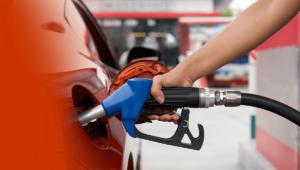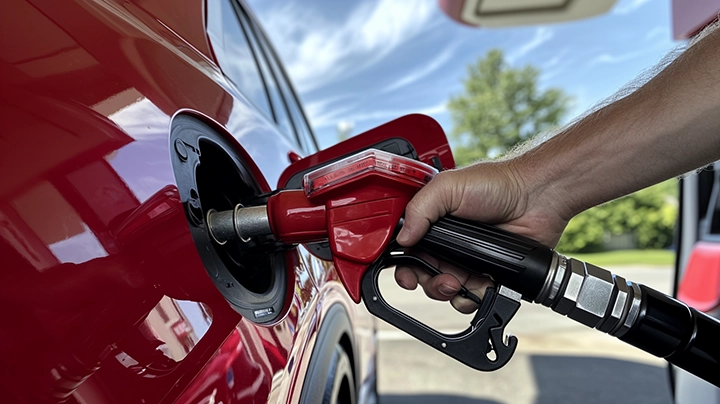The Basics of Gasoline Pumps
Gasoline pumps are essential devices used for transferring fuel from storage tanks to vehicles. Their primary function is to dispense gasoline safely and efficiently, ensuring that consumers can refuel their cars with minimal hassle. These pumps come in a variety of designs, broadly categorized as mechanical and electronic variants. Mechanical gasoline pumps utilize vacuum pressure to draw fuel from the tank, while electronic pumps employ electric motors to achieve similar results. The advent of electronic systems has allowed for more precise control, leading to improvements in efficiency and user experience.
Historically, gasoline pumps have evolved significantly since their introduction in the late 19th century. Early models were hand-operated, requiring manual effort to draw fuel into a glass receptacle before it was dispensed. However, with advancements in technology, modern gasoline pumps are equipped with electronic displays, payment systems, and integrated safety features. This transformation has made the refueling process faster and more convenient for consumers.
Key components of gasoline pumps play a crucial role in their operation. The nozzle is the part used by consumers to fill their vehicles; it is designed to fit securely into the car’s fuel inlet, preventing spills. The flow meter measures the amount of gasoline dispensed, ensuring accuracy and enabling customers to see how much fuel they are purchasing. Control systems, which include valves and sensors, monitor the flow and maintain safety standards by preventing overflows. Together, these components work in harmony to provide a seamless refueling experience. Understanding these elements is vital for appreciating how gasoline pumps have become an indispensable part of our daily lives.
The Technology Behind Gasoline Pumps
Modern gasoline pumps have undergone significant advancements in design and functionality, integrating innovative technology to improve user experience and operational efficiency. Central to these developments is the adoption of digital display systems, which provide real-time information to customers. These displays often showcase essential details, such as fuel price per gallon, fuel type options, and even promotional offers. This information empowers consumers to make informed decisions while filling their tanks.
In addition to improved display technologies, payment processing methods have evolved substantially. Many contemporary gasoline pumps now feature integrated payment terminals that accept various forms of payment, including credit and debit cards, mobile payments, and even contactless options. This versatility enhances convenience for customers while streamlining transaction processes for service stations. Consequently, the integration of secure payment technologies not only boosts the satisfaction of users but also strengthens operational efficiency.
Safety remains a cornerstone in the design of gasoline pumps. Numerous models are now equipped with advanced safety features aimed at preventing spills and overflows during the refueling process. Innovations such as automatic shut-off mechanisms, vapor recovery systems, and spill containment measures play a crucial role in reducing environmental hazards associated with gasoline dispensing. These safety features not only protect the environment but also ensure compliance with regulatory standards, reinforcing the commitment of service stations to sustainable practices.
Looking towards the future, the emergence of smart gasoline pumps is a burgeoning trend. These technologically enhanced pumps can connect to mobile applications, providing real-time fuel prices, loyalty rewards, and tailored promotions directly to consumers’ smartphones. As technology continues to advance, the integration of such features will further revolutionize the refueling experience, making it more convenient and rewarding for customers while optimizing operations for service stations.

Environmental Impact of Gasoline Pumps
The operational processes of gasoline pumps significantly contribute to fuel emissions, which have environmental implications that should not be overlooked. Gasoline pumps are essential for distributing fuel, but the combustion of gasoline in vehicles releases carbon dioxide (CO2), volatile organic compounds (VOCs), and other pollutants into the atmosphere. These emissions contribute to air quality issues, climate change, and deteriorating public health. Consequently, the industry has begun to implement various measures to mitigate these adverse effects.
One notable advancement is the introduction of vapor recovery systems, which are designed to capture the volatile compounds that escape during the refueling process. These systems are crucial for minimizing emissions that occur when fuel is dispensed. By capturing vaporized fuel that would otherwise pollute the air, these technologies help enhance the efficiency of gasoline pumps while substantially lowering the environmental impact. Some gasoline pumps have also been upgraded with self-service capabilities that include onboard filters and sensors, further reducing harmful emissions.
As global awareness of environmental issues increases, there is a pronounced shift towards cleaner energy sources. The traditional gasoline pump is not excluded from this transition. The potential for adaptation is evident as the industry explores the integration of electric and hydrogen fuel technologies into existing frameworks. As electric vehicles (EVs) gain popularity, future fueling stations may be equipped with charging stations, thereby diversifying the services offered. Additionally, hydrogen fuel pumps may emerge, offering an alternative method to power vehicles while resulting in zero tailpipe emissions.
In conclusion, while gasoline pumps play a crucial role in fuel distribution, their contribution to fuel emissions raises environmental concerns. However, ongoing technological advancements and a transition towards alternative fuels are paving the way for a more sustainable future, which industry stakeholders must actively pursue to ensure environmental responsibility.
Future Trends in Gasoline Pump Industry
As the automotive industry rapidly evolves towards sustainable practices, the gasoline pump industry faces a transformative period. The rise of electric vehicles (EVs) is perhaps the most significant trend affecting traditional gasoline pumps. As more consumers opt for electric alternatives, the demand for conventional fuel dispensers will inevitably decline. However, this shift may present opportunities for gasoline pump manufacturers to adapt their offerings, potentially incorporating charging stations alongside traditional pumps, thus creating a dual functionality that can cater to a diverse clientele.
Moreover, the integration of renewable energy sources into the gasoline pump infrastructure is increasingly becoming a focal point. The industry may see a blend of energy options available at refueling stations, including biofuels and hydrogen alongside gasoline. This diversification aligns with global sustainability efforts and consumer interest in greener fuel alternatives. Stations might evolve into hubs for various fuel types, thereby broadening their market appeal while addressing environmental concerns.
Automation and technological advancements are also poised to reshape the gasoline pump landscape. The development of automated fuel dispensing systems may enhance efficiency and streamline the refueling process. These systems can reduce human interaction, minimize wait times, and provide real-time data analytics to both consumers and service providers. Furthermore, innovations in payment systems, such as contactless options or mobile app integrations, will likely improve convenience and enhance consumer experience at the gasoline pump.
Lastly, consumer behavior is anticipated to shift as eco-consciousness and convenience become paramount. Stakeholders in the gasoline pump industry must remain vigilant and responsive to these changes. Engage with emerging trends, invest in innovative technologies, and adapt to evolving consumer preferences to ensure continued relevance and success in an increasingly competitive landscape.
You May Also Read
